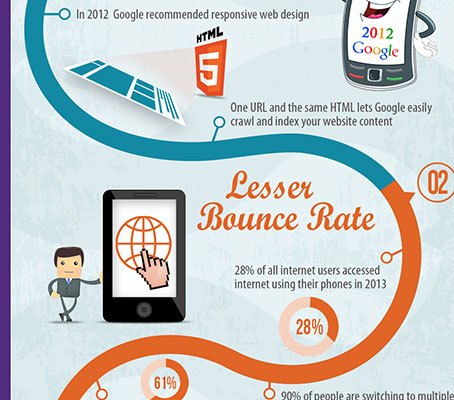Vital Site Style Tips: Exactly How To Build A Website That Prioritizes Individual Experience
Vital Site Style Tips: Exactly How To Build A Website That Prioritizes Individual Experience
Blog Article
Material Composed By-Aguirre Devine
When it concerns site design, guaranteeing user-friendliness is essential. From your domain name to structured navigating, every element plays a vital duty in developing a site that satisfies your audience's requirements. Yet what about the better information that can make or damage an individual's searching experience? Stay tuned as we discover some often-overlooked tips that can elevate your web site's usability to the following level, making it absolutely stand out in the digital landscape.
Importance of Responsive Style
Responsive design is a crucial facet of modern-day web site development. Guaranteeing your internet site is responsive methods that it can adjust to various screen dimensions and tools, providing a smooth experience for customers.
With the boosting use of smartphones and tablets to access the web, having a responsive style is crucial for reaching a bigger target market. It assists in enhancing user experience by making your web site easy to browse and keep reading any type of gadget.
In addition, responsive layout can favorably impact your online search engine positions, as search engines like Google prioritize mobile-friendly internet sites. By having a receptive layout, you're also future-proofing your website, as new devices with varying screen sizes continue to arise.
Simplify Navigation Framework
To boost individual experience and help with very easy access to information on your website, enhancing the navigation structure is paramount. When developing your website, focus on creating a clear and intuitive navigation food selection that helps visitors locate what they're looking for quickly.
Limit the number of menu products to the fundamentals, organizing associated pages with each other to stay clear of frustrating individuals. Use descriptive tags that plainly indicate the web content of each page, making it much easier for customers to recognize where each web link will take them.
Think about executing dropdown menus for subcategories to prevent littering the primary navigation bar. Additionally, include a search bar plainly on the web page for individuals who like looking for certain information.
Prioritize mobile responsiveness in your navigating layout to ensure simple accessibility on all tools.
Maximize Page Load Rate
Improving page tons rate is important for preserving visitors on your web site. Slow-loading pages annoy customers and can bring about high bounce rates. To web page writing , start by enhancing images. Press photos without jeopardizing top quality to reduce their file sizes.
In addition, make it possible for web browser caching to store frequently accessed sources locally, quickening lots times for returning visitors. Minify CSS, JavaScript, and HTML data by eliminating unneeded characters, comments, and format, improving tons speed.
Take into consideration using a content shipment network (CDN) to distribute your website's material throughout multiple servers worldwide, reducing latency for users accessing your website from different places. Lastly, limit using third-party manuscripts and plugins, as they can substantially impact load times.
Verdict
To conclude, by incorporating responsive design, simplifying navigation, and optimizing web page lots rate, you can develop a straightforward website that attract a larger audience and boosts individual experience. These essential elements ensure that site visitors can conveniently gain access to and navigate your site throughout various devices, causing increased involvement and fulfillment. By concentrating on these key facets, you can build an effective site that maintains customers returning for even more.
